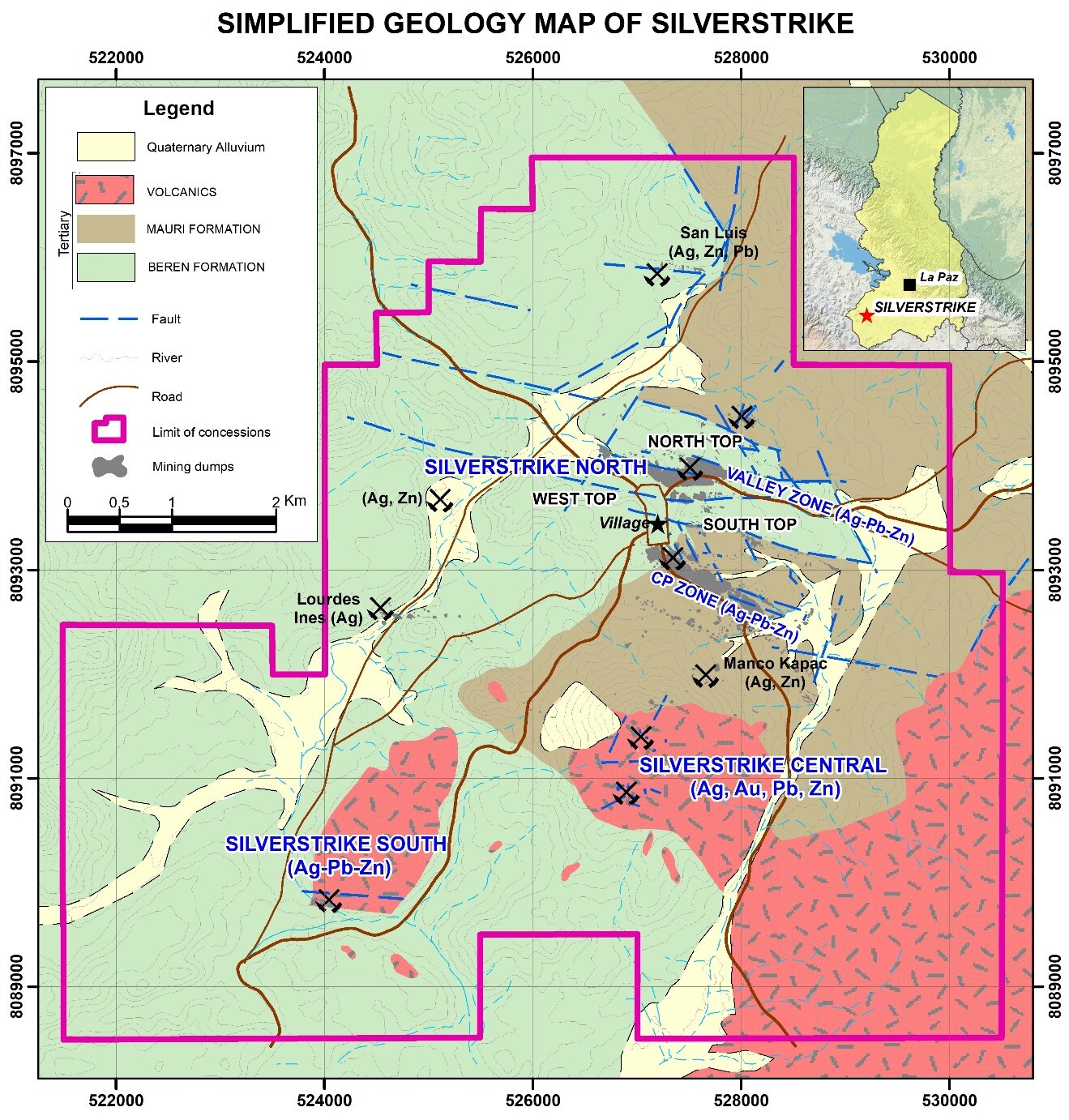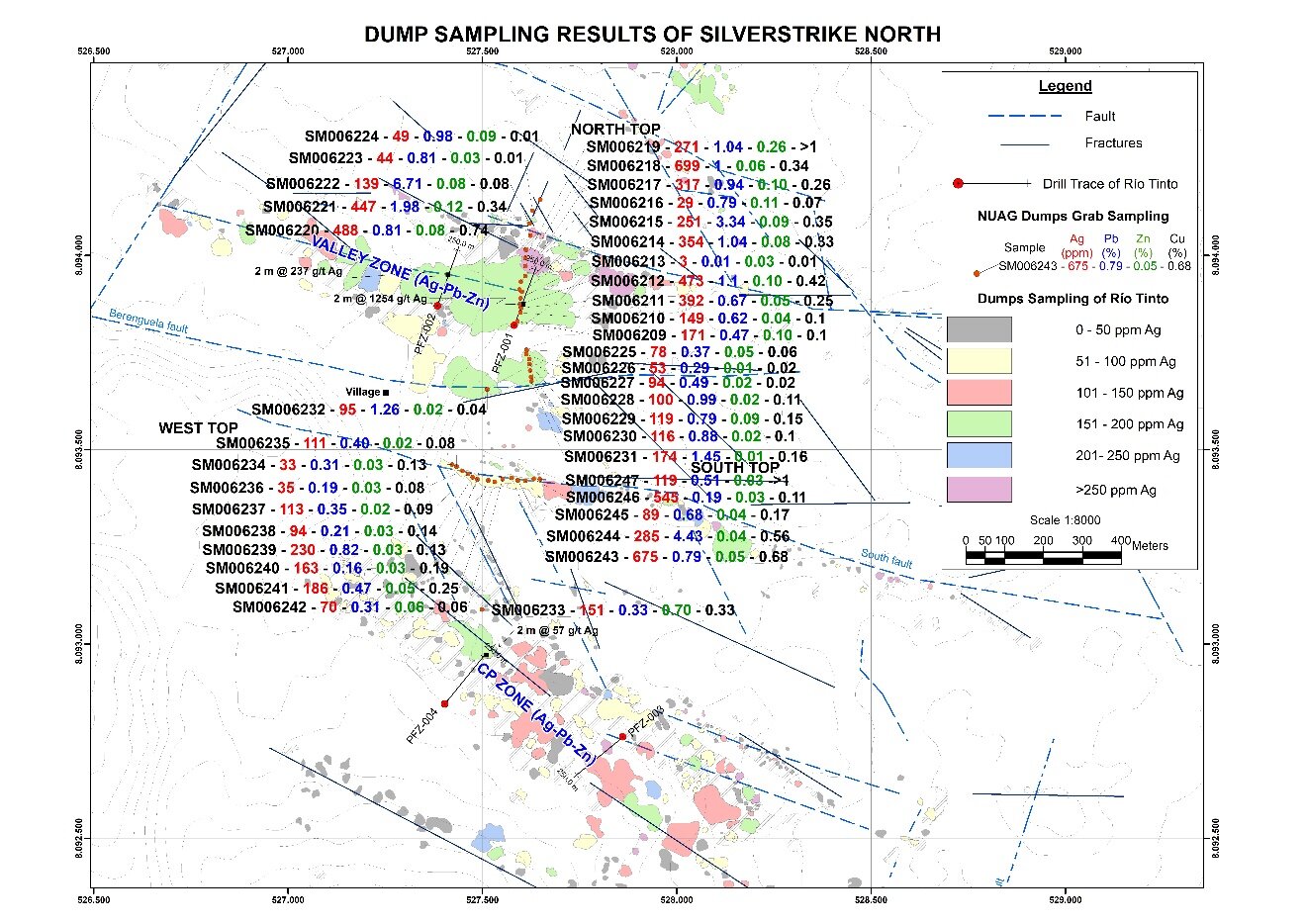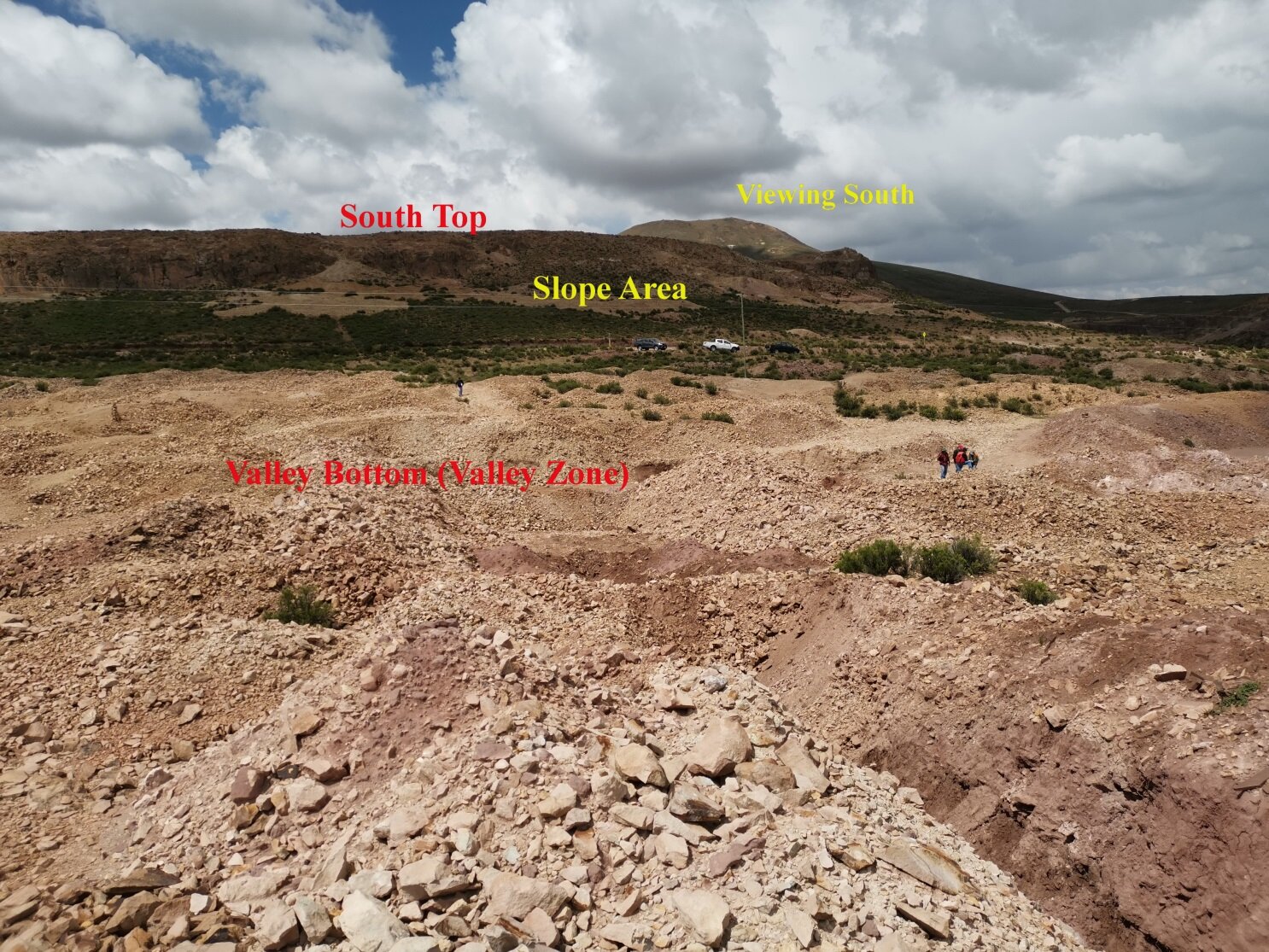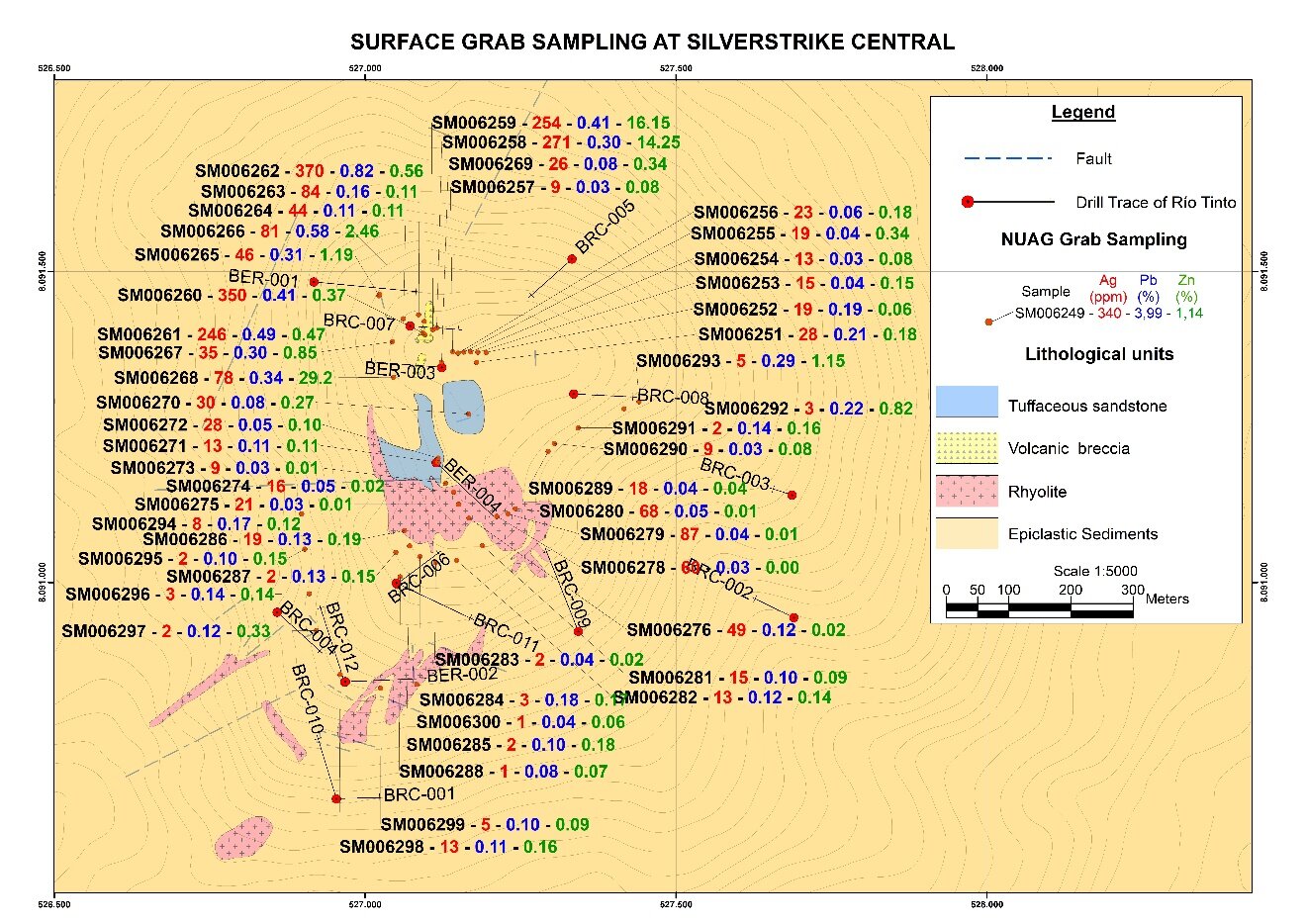Publicly Disclosed through Globe Newswire
VANCOUVER, British Columbia – December 4, 2019 – New Pacific Metals Corp. (“New Pacific” or the “Company”) is pleased to announce that the Company’s wholly-owned subsidiary has signed an agreement with an arm’s length private Bolivian corporation (the “Vendor”) to acquire a 98% interest in the Silverstrike silver project (the “Silverstrike Project” or the “Project”) from the Vendor by making a one-time cash payment of US$1.35 million. New Pacific will cover 100% of the future expenditures of exploration, mining, development and production activities. The agreement has a term of 30 years and renewable for another 15 years without any payment and is subject to an approval by Autoridad Jurisdiccional Administrativa Minera (“AJAM”) in Bolivia.
The Silverstrike Project, at an elevation of 4,000 to 4,500 metres (“m”), is located approximately 140 kilometres (“km”) southwest of La Paz, Bolivia or approximately 450 km northwest of New Pacific’s Silver Sand Project. The Silverstrike Project consists of nine (9) Special Temporary Authorizations (“ATEs”) with an area of approximately 13km² currently in the process of conversion to ‘Mining Administrative Contracts’ before AJAM. The Vendor has also applied for exploration rights over areas surrounding the Silverstrike Project as part of the transaction.
Geologically, the Silverstrike Project is composed of Tertiary red sandstones and mudstone sequences (Mauri and Beren Formations) that were extruded by a Tertiary rhyolitic volcanic dome and associated pyroclastic sediments.
The Project contains extensive silver mining dumps (Figure-1) the results of Spanish Colonial mining activities which exploited near surface polymetallic silver-gold-lead-zinc (Ag-Au-Pb-Zn) mineralized bodies. Currently there are no active mining activities on site. The Silverstrike Project is divided into three areas according to the styles of mineralization:
1). Subvertical Ag-Pb-Zn mineralized fractures developed in sub-horizontal sandstones at Silverstrike North, where the mineralization seems to be related to bleached whitish sandstones by hydrothermal fluids. The style of silver mineralization is similar to that in Silver Sand Project;
2). Disseminated Ag-Au-Pb-Zn mineralization associated with rhyolitic volcanic dome or diatreme of 900m by 900m extent at the Silverstrike Central; and
3). Ag-Pb-Zn Mineralization in quartz and K-feldspar phenocryst rhyolite that intruded into red sandstone strata at Silverstrike South.
Rio Tinto extensively sampled the mining dumps in the Project area and drilled four diamond drill holes at Silverstrike North, and four diamond holes and twelve RC holes in Silverstrike Central in 1995. Near surface Ag-Au-Pb-Zn mineralization was identified in all three areas.
Figure 1: Simplified Geological Map of Silverstrike Project
Silverstrike North
By access and locations, the Silverstrike North is divided into the Valley Zone, North Top, South Top, West Top, and the CP Zone.
Silver-containing sulfosalts and sulfides fill in open fractures in bleached sandstones in forms of sheeted veins, swarm veinlets, stockworks and crackle breccias at the Silverstrike North over an area of 3km by 3km. Dense fractures occur dominantly along the north-west-west to north-west directions at high angles that are generally confined within the red sandstone and only stringers or feeder zones cutting through the underlying red mudstones.
Rio Tinto has sampled extensively the mining dumps on surface (Photo 1) over an area 1.5km by 1.5km in 1995, yielding average grades of 150-200g/t silver and 1% lead (Figure 2). Rio Tinto also completed 1,000.6m of diamond drilling in four holes at Silverstrike North. The PFZ001 hole intercepted 2m @ 1,254 g/t Ag, 0.33% Pb, 0.19% Zn and 0.48% Cu from 88m to 90m, and the PFZ002 hole intercepted 2m @ 237 g/t Ag, 0.6% Pb, 0.07% Zn and 0.5% Cu from 120m to 122m.
Two holes drilled at the CP Zone did not intercept any meaningful mineralization.
Figure 2: Mining Dump Sampling Results for Silverstrike North
Twenty-four grab samples taken by New Pacific from the mining dumps in the Valley Zone (including valley, slope and North Top) returned average grades 185g/t Ag, 0.93% Pb, 0.07% Zn and 0.21% Cu (Table 1)[1]. Fifteen grab samples from the mining dumps from the South Top and the CP zone averaged 193g/t Ag, 0.68% Pb, 0.08% Zn and 0.27% Cu. These results are consistent with the historical dump sampling results by Rio Tinto (Figure 2, Table 1). Future drilling by New Pacific will focus on the bleached sandstones from the South Top, North Top and the West Top.
[1]The grab samples are selected samples and are not necessarily representative of the mineralization hosted on the property.
Photo 1: Extensive Mining Diggings and Dumps at the Valley Zone and the South Top
Silverstrike Central
Ubiquitous disseminated silver-gold-lead-zinc mineralization occurs in volcanic epiclastic sediments and breccias associated with rhyolite intrusives in a Tertiary volcanic diatreme system of 900m by 900m size. Historical mining sites and dumps are scattered around, but there are no active mining activities currently. In 1995, Rio Tinto completed four diamond coring holes totaling 1,267m with the best intercept 220m @ 45g/t Ag, 0.51% Pb and 0.44% Zn from 13.0m to 233.0m in hole BER-3 in the northern silver-lead-zinc mineralization area, and 12 reverse circulation holes totaling 2,986.7m with the best intercept of 62m @ 0.74g/t Au and 0.3% Pb from 112m to 174m in hole BRC-004 in the southern gold mineralization area.
Forty-nine grab samples from surface outcrops and dumps at Silverstrike Central returned average grades of 51g/t Ag, 0.16% Pb and 0.91% Zn (Figure 3, Table 1).
Figure 3: Surface Grab Sample Results by New Pacific from the Silverstrike Central
Silverstrike South
A 300m long East-West trending historical Colonial era adits and declines plus surface mining cuts along structures developed in the quartz-potassium feldspar phenocryst rhyolite body that intruded red sandstones with extensive mining dumps. Mineralization is hosted in sheared rhyolite along the contact structure of rhyolite intrusive with Tertiary red sandstones with the true width of mineralization unknown due to covering of mining dumps and talus. No modern exploration or current mining was recoded.
Three samples from the mining dumps at the Silverstrike South returned average grades of 294g/t Ag, 3.3% Pb, 1.56% Zn (Table 1). Extensive post mineralization and active hydrothermal sinter and sinter sediments have also developed along the nearby river which may have made the geology more complex for the purpose of exploring Ag-Pb-Zn mineralization associated rhyolites.
By using the geological knowledge gained at exploring the Silver Sand Project, the Company believes that the Silverstrike Project represents an opportunity similar to the Silver Sand Project with the potential to explore for large scale silver mineralization system.
Quality Assurance and Quality Control
The grab samples with results released in the news release were shipped in securely sealed bags by New Pacific staff in the Company’s vehicles directly from field to ALS Global in Oruro, Bolivia for preparation, and ALS Global in Lima, Peru for geochemical analysis. All samples are first analyzed by a multi-element ICP package (ALS code ME-MS41) with ore grade over limits for silver, lead and zinc further analyzed using ALS code OG46. Further silver over limits are analyzed by gravimetric analysis (ALS code of GRA21).
The assay results of the grab samples are used for reconnaissance purpose, hence no certified reference materials and blank materials were inserted to the normal sample sequence. However, internal QAQC results of ALS did not show any significant bias of analysis or contamination during sample preparation.
Technical information contained in this news release has been reviewed and approved by Alex Zhang, P. Geo., Vice President of Exploration, who is a Qualified Person for the purposes of NI 43-101.
ABOUT NEW PACIFIC
New Pacific is a Canadian exploration and development company which owns the Silver Sand Project, in the Potosi Department of Bolivia and the Tagish Lake Gold Project in Yukon, Canada.
For further information, please contact:
New Pacific Metals Corp.
Gordon Neal
President
Phone: (604) 633-1368
Fax: (604) 669-9387
info@newpacificmetals.com
www.newpacificmetals.com
Neither TSX Venture Exchange nor its Regulation Services Provider (as that term is defined in the policies of the TSX Venture Exchange) accepts responsibility for the adequacy or accuracy of this release.
CAUTIONARY NOTE REGARDING FORWARD-LOOKING INFORMATION
Certain of the statements and information in this news release constitute “forward-looking information” within the meaning of applicable Canadian provincial securities laws. Any statements or information that express or involve discussions with respect to predictions, expectations, beliefs, plans, projections, objectives, assumptions or future events or performance (often, but not always, using words or phrases such as “expects”, “is expected”, “anticipates”, “believes”, “plans”, “projects”, “estimates”, “assumes”, “intends”, “strategies”, “targets”, “goals”, “forecasts”, “objectives”, “budgets”, “schedules”, “potential” or variations thereof or stating that certain actions, events or results “may”, “could”, “would”, “might” or “will” be taken, occur or be achieved, or the negative of any of these terms and similar expressions) are not statements of historical fact and may be forward-looking statements or information.
Forward-looking statements or information are subject to a variety of known and unknown risks, uncertainties and other factors that could cause actual events or results to differ from those reflected in the forward-looking statements or information, including, without limitation, risks relating to: fluctuating equity prices, bond prices, commodity prices; calculation of resources, reserves and mineralization, foreign exchange risks, interest rate risk, foreign investment risk; loss of key personnel; conflicts of interest; dependence on management and others.
This list is not exhaustive of the factors that may affect any of the Company’s forward-looking statements or information. Forward-looking statements or information are statements about the future and are inherently uncertain, and actual achievements of the Company or other future events or conditions may differ materially from those reflected in the forward-looking statements or information due to a variety of risks, uncertainties and other factors, including, without limitation, those referred to in the Company’s Annual Information Form for the year ended June 30, 2019 under the heading “Risk Factors”. Although the Company has attempted to identify important factors that could cause actual results to differ materially, there may be other factors that cause results not to be as anticipated, estimated, described or intended. Accordingly, readers should not place undue reliance on forward-looking statements or information.
The Company’s forward-looking statements or information are based on the assumptions, beliefs, expectations and opinions of management as of the date of this news release, and other than as required by applicable securities laws, the Company does not assume any obligation to update forward-looking statements or information if circumstances or management’s assumptions, beliefs, expectations or opinions should change, or changes in any other events affecting such statements or information. For the reasons set forth above, investors should not place undue reliance on forward-looking statements or information.



![[1]The grab samples are selected samples and are not necessarily representative of the mineralization hosted on the property.](https://staging.newpacificmetals.com/wp-content/uploads/2022/09/table.jpg)

